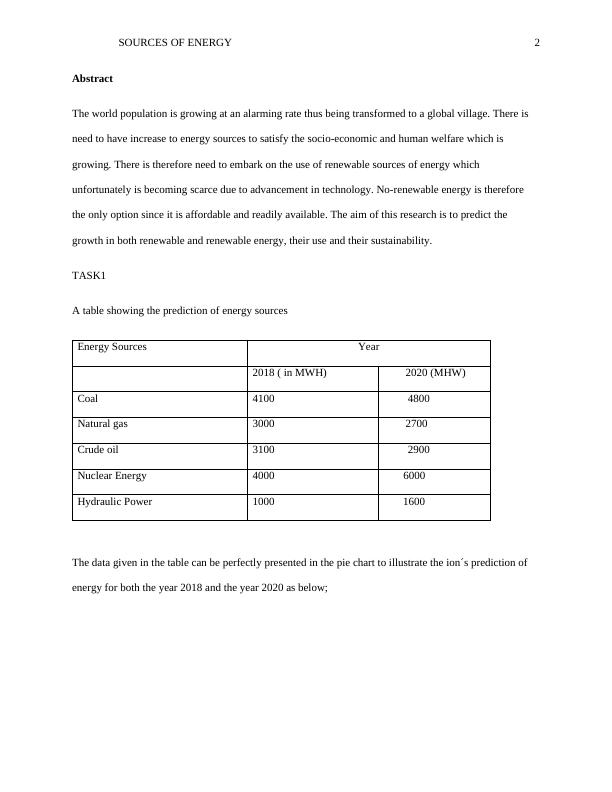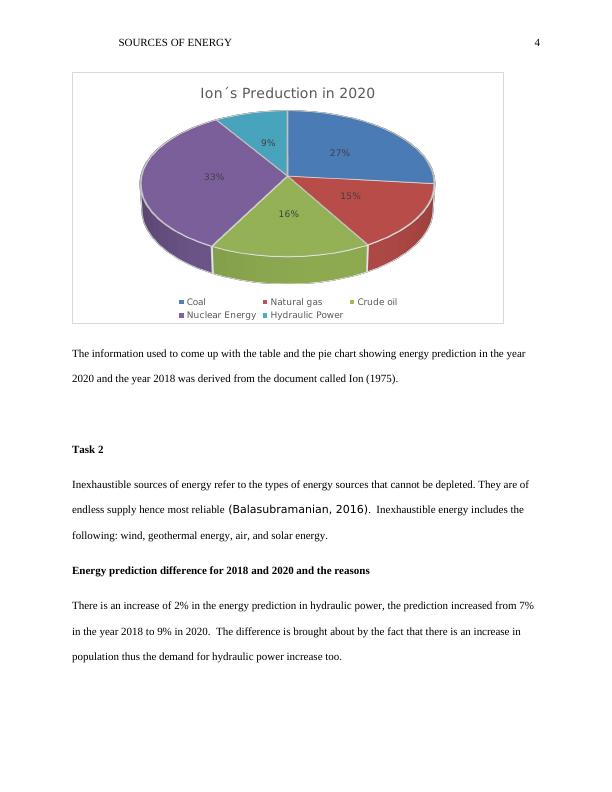SOURCES OF ENERGY 14 ENERGY SOURCES
Analyse and organise energy data from different sources; Explain why past predictions of energy sources differ from what actually happened; Describe the main uses of different fuels; Produce a well written, concise report appropriate for postgraduate level.
14 Pages2666 Words182 Views
Added on 2022-08-12
About This Document
TASK1 A table showing the prediction of energy sources of Energy Sources Year 2018 ( in MWH) 2020 (MHW) Coal 4100 Natural gas 3000 2700 Crude oil 3100 2900 Nuclear Energy 4000 6000 Hydraulic Power 1000 1600 The data given in the table can be perfectly presented in the pie chart to illustrate the ion s prediction of energy for both the year 2018 and the year 2020 as below; The information used to come up with the table and the pie chart showing
SOURCES OF ENERGY 14 ENERGY SOURCES
Analyse and organise energy data from different sources; Explain why past predictions of energy sources differ from what actually happened; Describe the main uses of different fuels; Produce a well written, concise report appropriate for postgraduate level.
Added on 2022-08-12
ShareRelated Documents
End of preview
Want to access all the pages? Upload your documents or become a member.
SOURCES OF ENERGY AND ITS OVERVIEW
|12
|2669
|15
Global Energy Resources: Differences between Projections and Current Usage
|15
|3000
|392
Patterns of Energy Use: A Comparison of Primary Energy Sources in 2020
|12
|2427
|87
Practical Application of Renewable Energy Technology
|32
|6094
|22
Renewable Energy Adoption and Efficiency in Devon
|37
|6560
|29
Unit 44 - Industrial Power, Electronics and Storage
|9
|3716
|62




